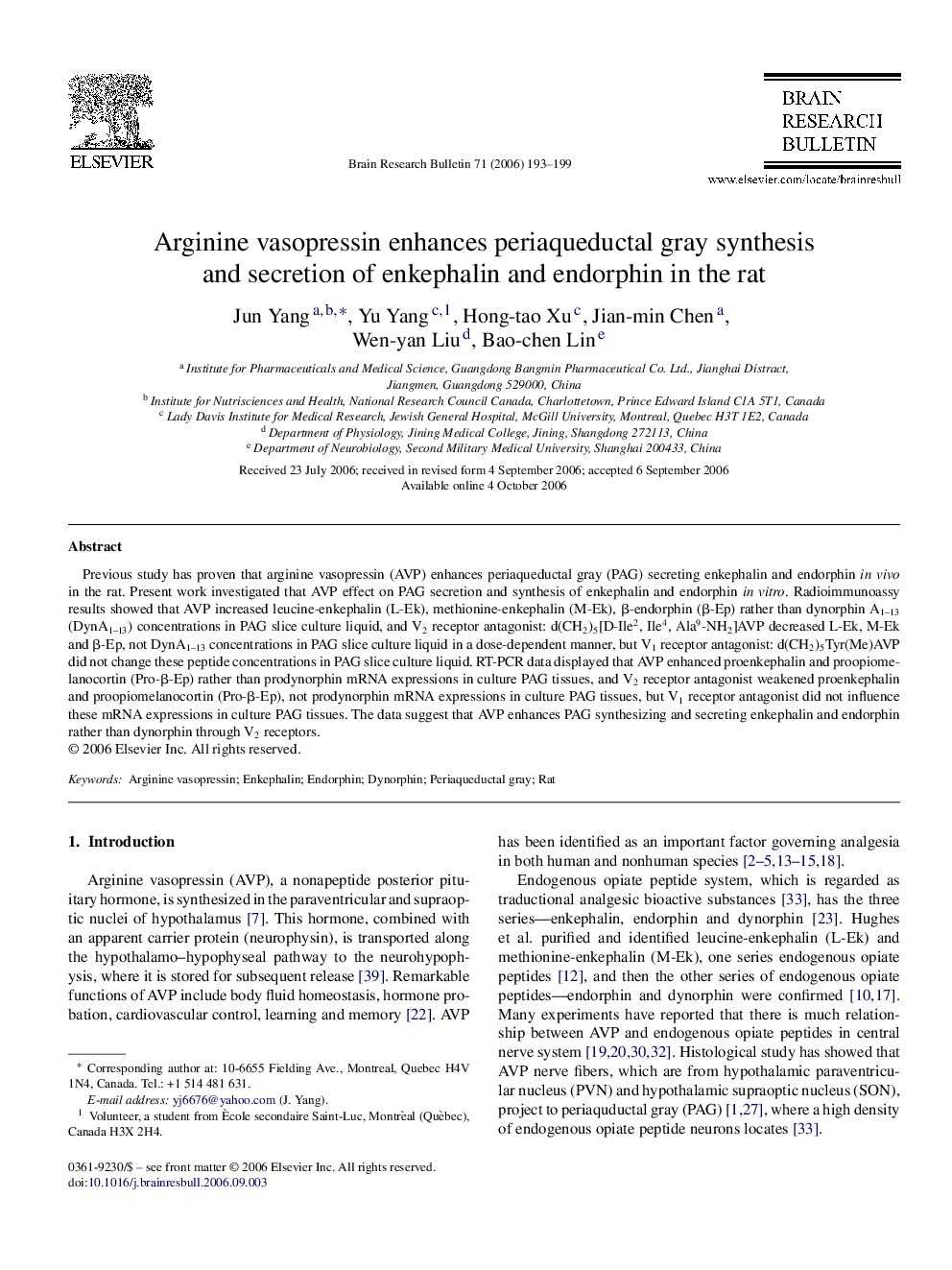| Article ID | Journal | Published Year | Pages | File Type |
|---|---|---|---|---|
| 4320232 | Brain Research Bulletin | 2006 | 7 Pages |
Previous study has proven that arginine vasopressin (AVP) enhances periaqueductal gray (PAG) secreting enkephalin and endorphin in vivo in the rat. Present work investigated that AVP effect on PAG secretion and synthesis of enkephalin and endorphin in vitro. Radioimmunoassy results showed that AVP increased leucine-enkephalin (L-Ek), methionine-enkephalin (M-Ek), β-endorphin (β-Ep) rather than dynorphin A1–13 (DynA1–13) concentrations in PAG slice culture liquid, and V2 receptor antagonist: d(CH2)5[D-Ile2, Ile4, Ala9-NH2]AVP decreased L-Ek, M-Ek and β-Ep, not DynA1–13 concentrations in PAG slice culture liquid in a dose-dependent manner, but V1 receptor antagonist: d(CH2)5Tyr(Me)AVP did not change these peptide concentrations in PAG slice culture liquid. RT-PCR data displayed that AVP enhanced proenkephalin and proopiomelanocortin (Pro-β-Ep) rather than prodynorphin mRNA expressions in culture PAG tissues, and V2 receptor antagonist weakened proenkephalin and proopiomelanocortin (Pro-β-Ep), not prodynorphin mRNA expressions in culture PAG tissues, but V1 receptor antagonist did not influence these mRNA expressions in culture PAG tissues. The data suggest that AVP enhances PAG synthesizing and secreting enkephalin and endorphin rather than dynorphin through V2 receptors.
